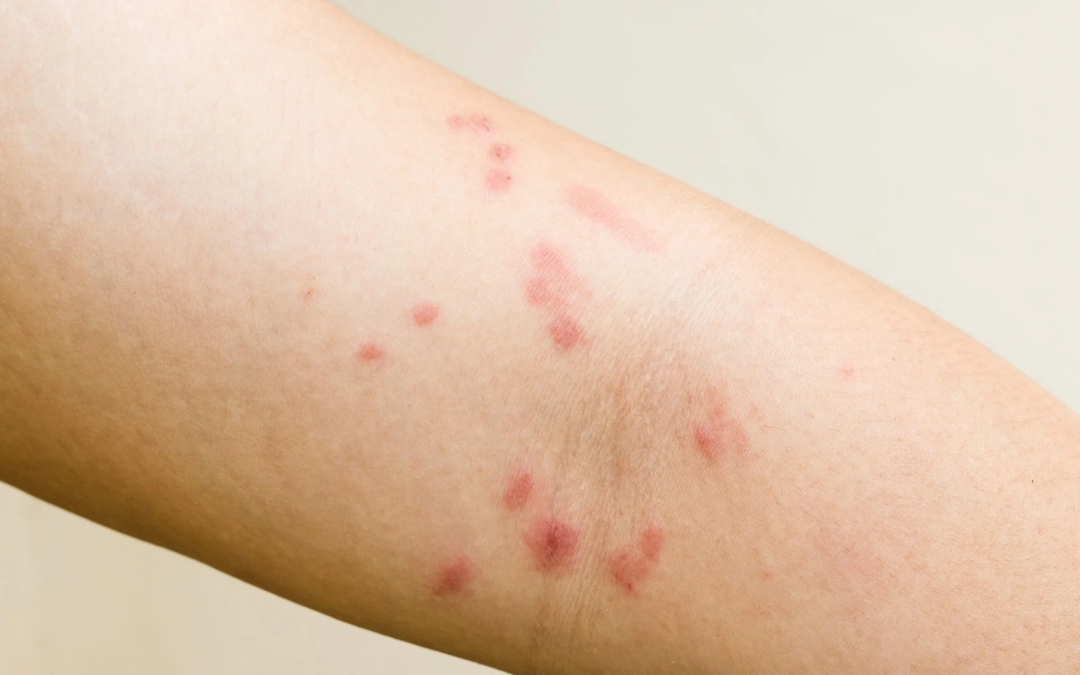Kustha roga, or Kushtha roga, is a term used in Ayurveda to refer to a group of skin diseases. “Kustha” literally means “that which causes pain or discomfort,” and includes a range of skin diseases that can cause itching, pain, and other discomforts. According to Ayurveda for Kustha roga is caused by an imbalance of the three doshas – Vata, Pitta, and Kapha – in the body.
There are several types of Kustha roga, including:
- Vata Kustha: This sort of Kustha roga is caused by an excess of Vata dosha in the body and is characterized by dryness, scaling, and cracks in the skin.
- Pitta Kustha: This type of Kustha roga is caused by an excess of Pitta dosha in the body and is characterized by redness, inflammation, and burning sensations in the skin.
- Kapha Kustha: This kind of Kustha roga is caused by an excess of Kapha dosha in the body and is characterized by swelling, itching, and oozing of fluids from the skin.
- Tridoshaja Kustha: This type of Kustha roga is caused by an imbalance of all three doshas in the body and is characterized by a combination of symptoms from each dosha.
Ayurveda for Kustha roga involves identifying the specific dosha imbalance and treating it accordingly. Treatment may include herbal remedies, dietary changes, and lifestyle modifications to bring the doshas back into balance.
Common Natural herbs used in the treatment of Ayurveda for Kustha roga include Neem, Manjistha, Turmeric, and Guduchi. Panchakarma therapies like Vamana (therapeutic vomiting), Virechana (therapeutic purgation), and Raktamokshana (bloodletting) may also be used to treat Kustha roga. It is important to seek the guidance of a qualified Ayurvedic practitioner for the proper diagnosis and treatment of Kustha roga.
Herbs for Kushta Roga
In Ayurveda for kustha there are several herbal medicines that can be used for the treatment of Kustha roga. Here are some of the commonly used Ayurvedic medicines for Kustha roga:
- Neem (Azadirachta indica): Neem is one of the most commonly used herbs in Ayurveda for kustha the treatment of skin diseases, including Kustha roga. It has anti-inflammatory, anti-bacterial, and anti-fungal properties that can help to reduce inflammation, itching, and other symptoms of Kustha roga.
- Manjistha (Rubia cordifolia): Manjistha is another important herb used in Ayurveda for the treatment of skin diseases. It has blood-purifying properties and can help to eliminate toxins from the body, which is essential for the treatment of Kustha roga.
- Turmeric (Curcuma longa): Turmeric is a popular spice used in Indian cooking and is also used in Ayurvedic medicine for its anti-inflammatory and anti-bacterial properties. It can help to reduce inflammation, pain, and other symptoms of Kustha roga.
- Guduchi (Tinospora cordifolia): Guduchi is an immunomodulatory herb that can help to boost the immune system and reduce inflammation in the body. It is often used in Ayurveda for the treatment of Kustha roga.
- Kutaja (Holarrhena antidysenterica): Kutaja is a medicinal plant that has been used in Ayurvedic medicine for centuries. It has anti-inflammatory, anti-bacterial, and anti-parasitic properties that can help to treat various skin diseases, including treatment in Ayurveda for kustha.
- Haridra (Curcuma longa): Haridra, also known as turmeric, is another herb commonly used in Ayurvedic medicine for the treatment of skin diseases. It has anti-inflammatory, anti-bacterial, and anti-fungal properties that can help to reduce inflammation, itching, and other symptoms of Kustha roga.
Home Remedies To Manage Kustha
There are several natural home remedies that can help to alleviate the symptoms of Kustha roga. Here are some examples:
- Neem leaves: Boil a handful of neem leaves in water and use the water to bathe the affected area. Neem has anti-inflammatory, anti-bacterial, and anti-fungal properties that can help to reduce inflammation and itching.
- Aloe vera: Apply fresh aloe vera gel to the affected area. Aloe vera has soothing and cooling properties that can help to reduce inflammation, redness, and itching in Ayurveda for Kustha and several other skin-related disorders.
- Turmeric paste: Mix turmeric powder with water to make a paste and apply it to the affected area. Turmeric has anti-inflammatory and anti-bacterial properties that can help to reduce inflammation and prevent infection.
- Coconut oil: Apply coconut oil to the affected area. Coconut oil has anti-inflammatory and anti-bacterial properties that can help to reduce inflammation and prevent infection.
- Apple cider vinegar: Mix equal parts of apple cider vinegar and water and apply the mixture to the affected area with a cotton ball. Apple cider vinegar has anti-inflammatory and anti-bacterial properties that can help to reduce inflammation and prevent infection.
- Epsom salt bath: Add Epsom salt to a warm bath and soak for 20-30 minutes. Epsom salt has anti-inflammatory properties that can help to reduce inflammation and soothe the skin and helps in Ayurveda for kustha roga.
Shodhana For Kustha Roga
Vamana and Virechana are two of the five Panchakarma procedures in Ayurveda that are used for cleansing the body and treating various diseases, including Kustha roga. Vamana is a therapeutic vomiting procedure that is used to eliminate excess Kapha dosha from the body, while Virechana is a therapeutic purgation procedure that is used to eliminate excess Pitta dosha from the body.
In the case of Ayurveda For Kustha roga, Vamana and Virechana can be used in combination with other Ayurvedic treatments to help eliminate toxins from the body and balance the doshas, which can help to alleviate the symptoms of the disease.
Vamana is particularly effective for Kapha-type Kustha roga, while Virechana is more effective for Pitta-type Kustha roga. However, the decision to use Vamana or Virechana, or both, depends on the individual’s constitution, the severity of the disease.
